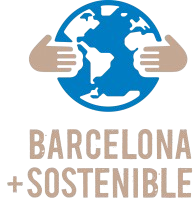The use of the programming languages is determined by social imitation mechanisms
A recent model suggests that the success or the failure of the programming languages could be strongly determined by social imitation mechanisms. Ref. Ar.: Solé R, Valverde S. A Cultural Diffusion Model for the Rise and Fall of Programming Languages. Human Biology
 Information technologies are continuously expanding, every year new models of smartphones and tablets appear, making the rivalry grow to be at very high levels. For this reason, there is a great demand for programmers who have good knowledge of programming languages. Even if we do not make a living as programmers, learning programming can improve our math skills and ability to solve problems. Programming is also a perfect vehicle to increase the presence of women in science and engineering.
Information technologies are continuously expanding, every year new models of smartphones and tablets appear, making the rivalry grow to be at very high levels. For this reason, there is a great demand for programmers who have good knowledge of programming languages. Even if we do not make a living as programmers, learning programming can improve our math skills and ability to solve problems. Programming is also a perfect vehicle to increase the presence of women in science and engineering.But, what is the best programming language? A variety of languages exist, each one with different functions and capabilities. Examples of popular languages would be the SQL language, very common for the management of databases; JavaScript, useful for creating websites; R language, popular with scientists and researchers from various fields to display and process data, or NetLogo, which is used in teaching. We even have languages that help us composing music.
A recent model designed by the researchers from the Department of Experimental and Health Sciences (DCEXS), Sergi Valverde and Ricard Solé, and published in the journal Human Biology suggests that the success or the failure of the programming languages could be strongly determined by social imitation mechanisms. In technology,  sometimes the best option disappears, while less advantageous options rise with the market dominated. The more users a technology has, the bigger is the probability that other users choose it. The direct consequence of this scenario is that social amplification and competition necessarily end up in the extinction of the less popular options.
sometimes the best option disappears, while less advantageous options rise with the market dominated. The more users a technology has, the bigger is the probability that other users choose it. The direct consequence of this scenario is that social amplification and competition necessarily end up in the extinction of the less popular options.
This is the first model that can predict the popularity rankings of the programming languages. Valverde and Solé make a strong prediction: " in the future, due to globalization and increasing returns of scale, only a few languages survive". In fact, much of the diversity of programming languages are used by small communities of users or have already been lost, as happens in the case of natural language. However, the amplification mechanisms affect much more to the programming languages, and the loss of diversity can take place in a lower timescale.
Reference Article: Solé, R.; Valverde, S. (2015). A Cultural Diffusion Model for the Rise and Fall of Programming Languages. Human Biology Vol. 87, No. 3, pp. 224-234 (2015).






















